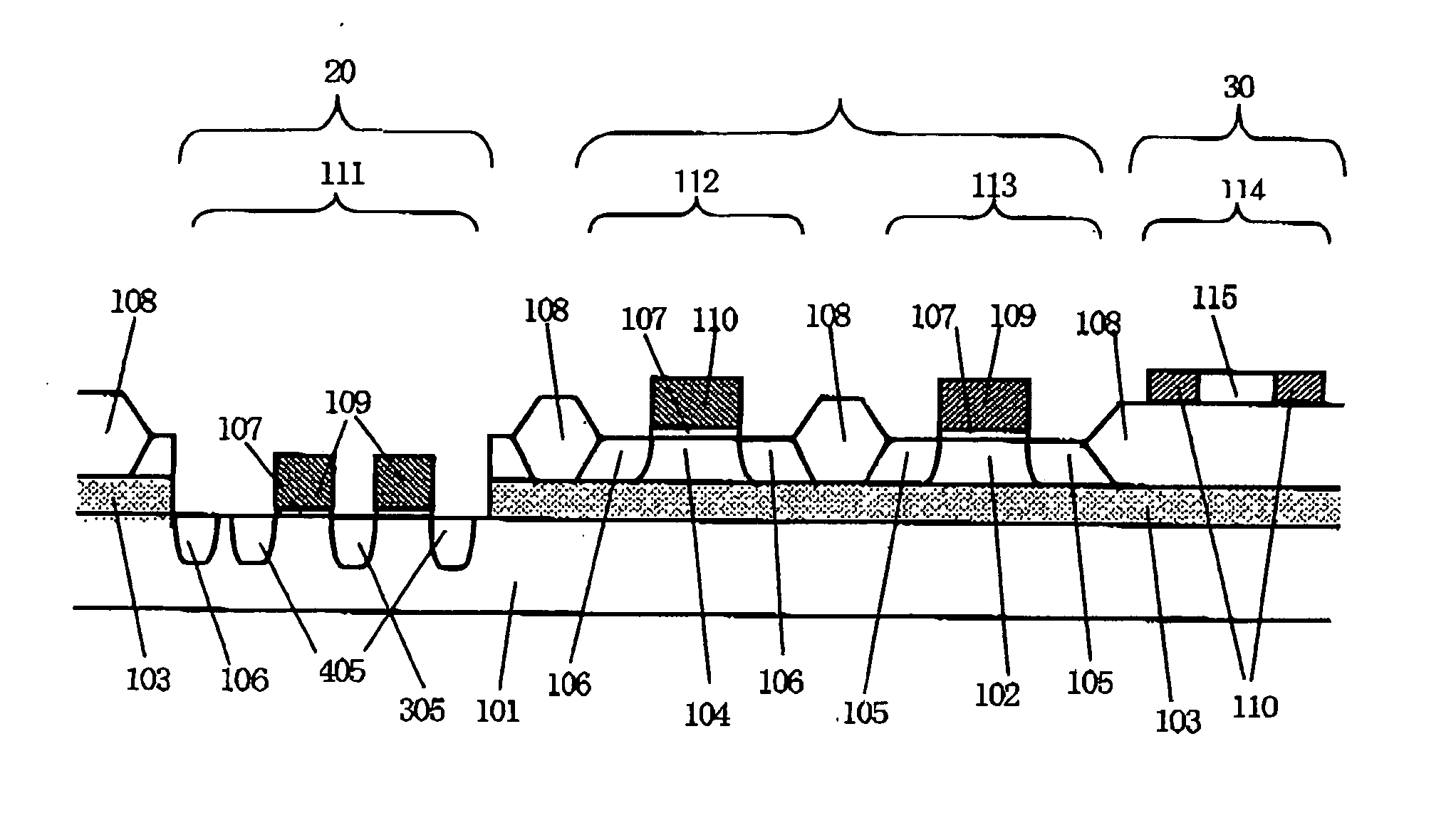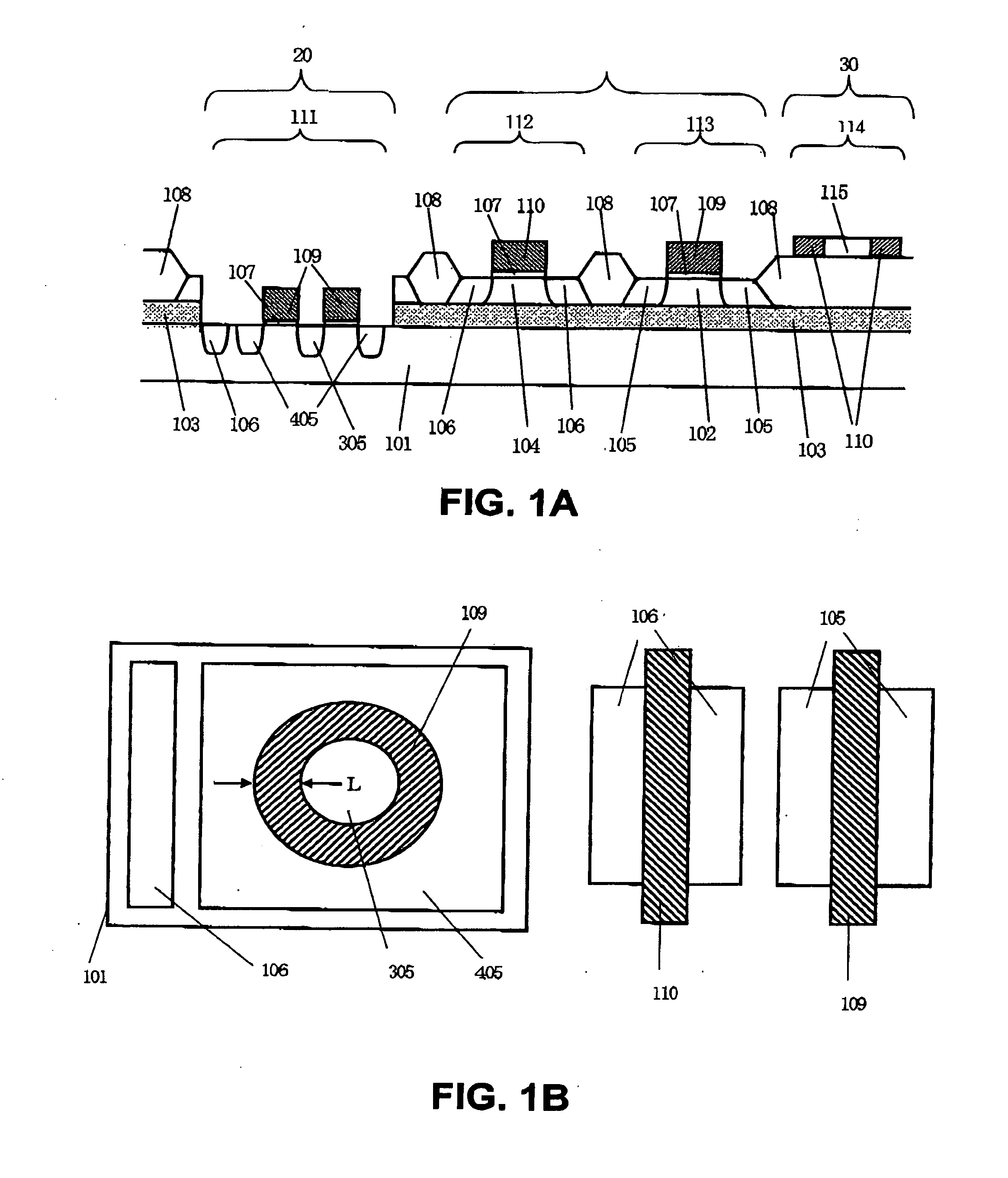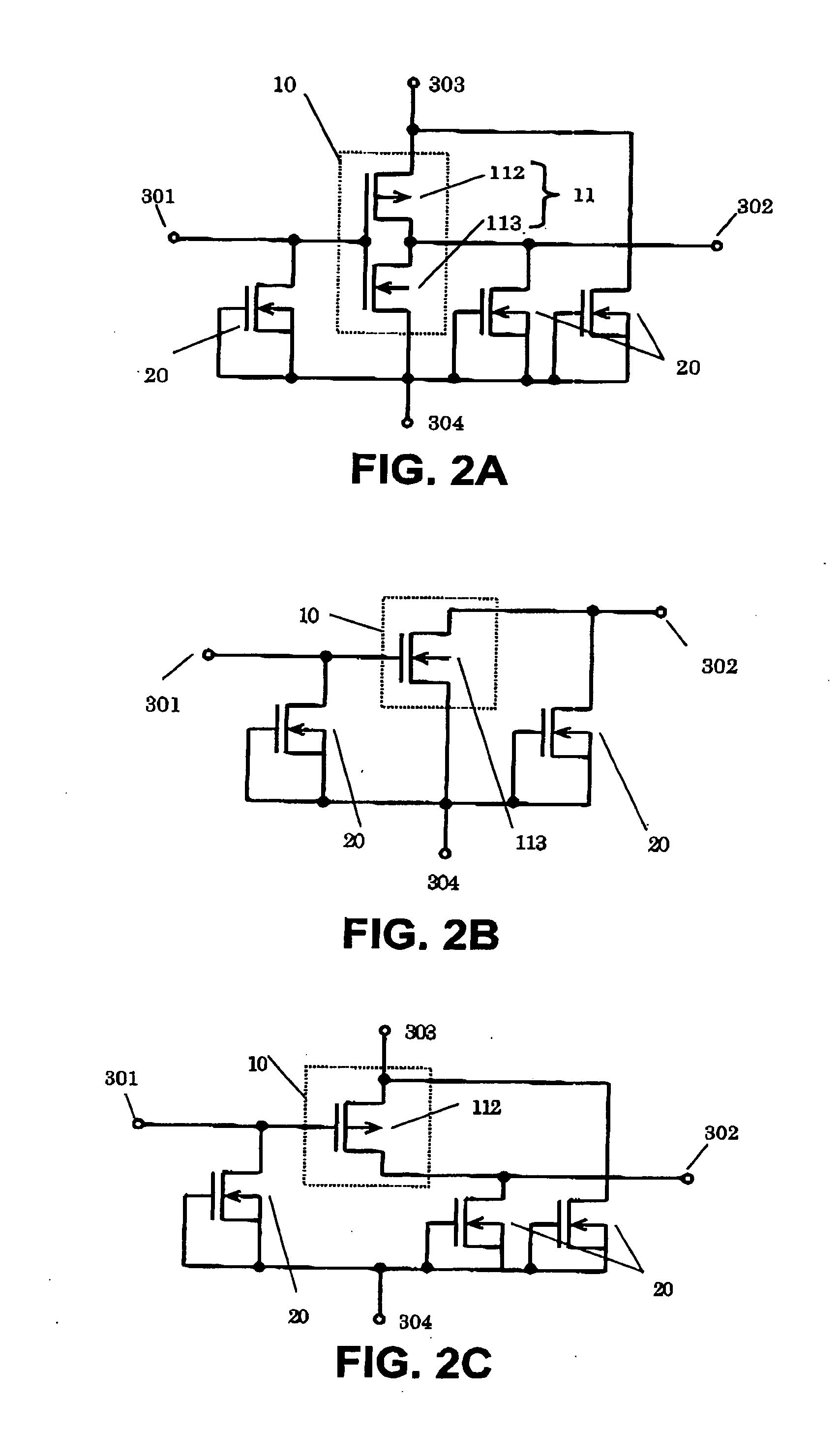Semiconductor integrated circuit device
- Summary
- Abstract
- Description
- Claims
- Application Information
AI Technical Summary
Benefits of technology
Problems solved by technology
Method used
Image
Examples
first embodiment
[0057]FIG. 1B is a schematic plan diagram of the semiconductor integrated circuit device shown in FIG. 1A according to the For ease of explanation, a resistor element is not shown in the drawing.
[0058] The NMOS transistor 113 and the PMOS transistor 112 of the internal element each include a source / drain region having a polygonal configuration (although the region is a rectangle in the drawing, polygonal configuration having more than four sides may be adopted), In general, a layout in which one side of the source region faces one side of the drain region is employed. On the other hand, the source 305 of the protection NMOS transistor 111 has a circular configuration and the drain 405 is formed so as to surround the source 305. In other words, the minimum distance between the source 305 and the drain 405 is kept constant. Note that the shape of the source 305 of the protection NMOS transistor 111 is not limited to the circular configuration. The source 305 may have an elliptical or...
second embodiment
[0061]FIG. 3 is a schematic sectional diagram showing a semiconductor integrated circuit device according to the present invention.
[0062] In the first embodiment of the present invention shown in FIG. 1, a single layer of a general-purpose polysilicon is used for the gate electrode. In this case, particularly in a case of a single layer of a P-type polysilicon 110, a resistance thereof is as high as about 100 Ω / □, and is not suitable for application in a semiconductor device in which high speed and high frequency operation is required. A structure shown in FIG. 3 is adopted to overcome the drawback. That is, the gate electrode is made to have a so-called polycide structure in which a refractory metal silicide 116 such as tungsten silicide, molybdenum silicide, titanium silicide, or platinum silicide is formed on the N-type polysilicon 109 and the P-type polysilicon 110 to have low resistance. The sheet resistance depends on the kinds of the refractory metal silicide and a thickness ...
PUM
 Login to View More
Login to View More Abstract
Description
Claims
Application Information
 Login to View More
Login to View More - R&D
- Intellectual Property
- Life Sciences
- Materials
- Tech Scout
- Unparalleled Data Quality
- Higher Quality Content
- 60% Fewer Hallucinations
Browse by: Latest US Patents, China's latest patents, Technical Efficacy Thesaurus, Application Domain, Technology Topic, Popular Technical Reports.
© 2025 PatSnap. All rights reserved.Legal|Privacy policy|Modern Slavery Act Transparency Statement|Sitemap|About US| Contact US: help@patsnap.com



